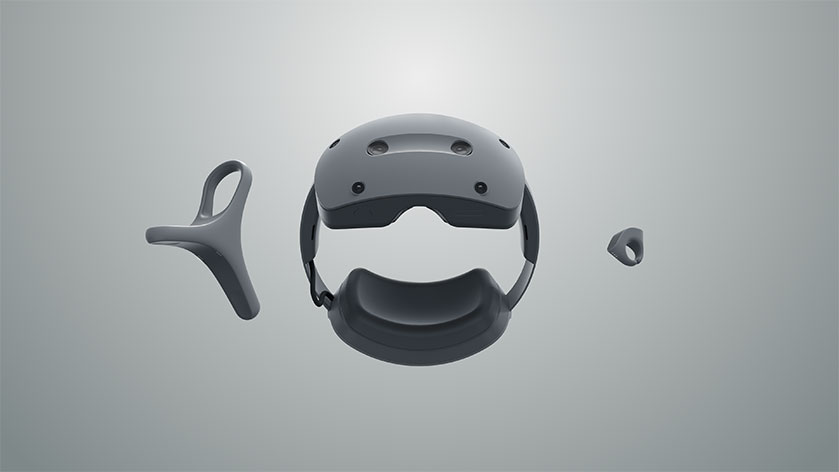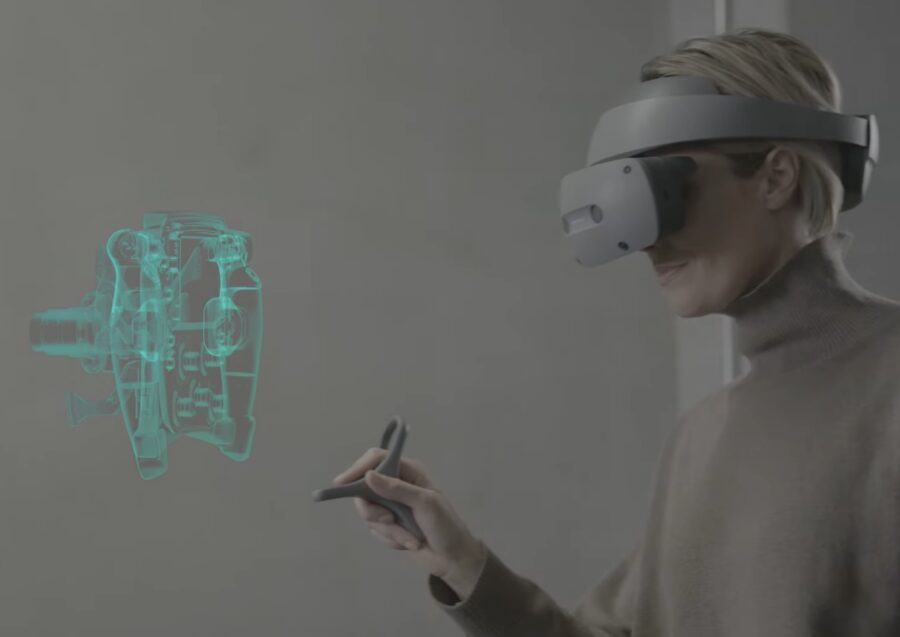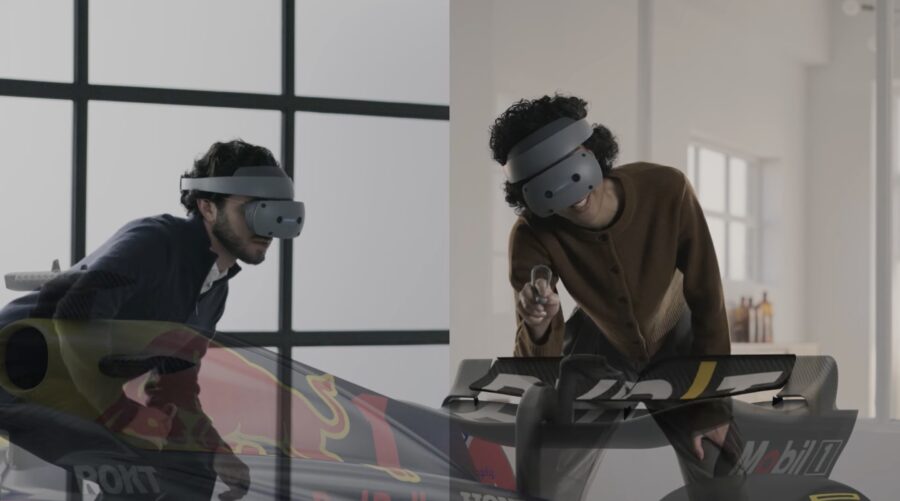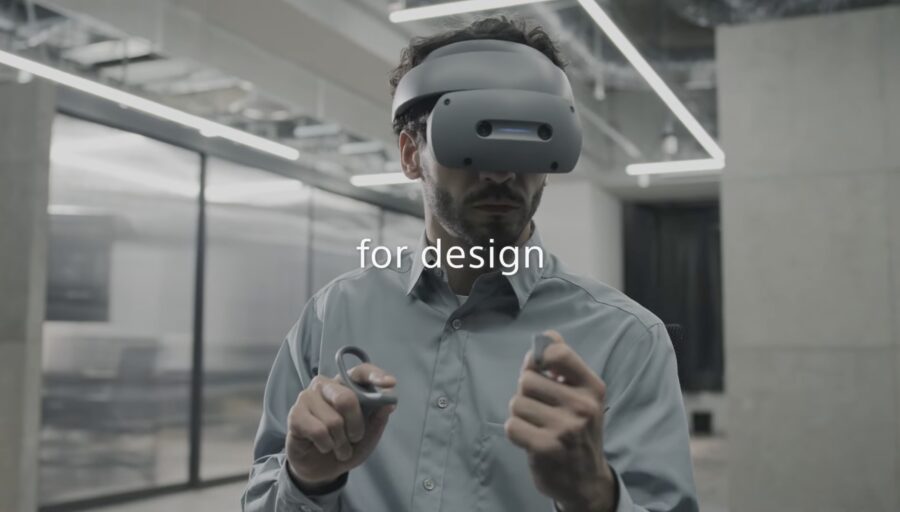
In General XR News
January 9, 2024 – Sony Corporation has today announced the development of a new immersive spatial content creation system, which includes an XR head-mounted display (HMD) equipped with high-quality 4K OLED Microdisplays, video pass-through functionality and proprietary rendering technology, plus a pair of controllers optimized for intuitive interaction with 3D objects.
According to Sony, the system is aimed at supporting creators in sophisticated 3D content creation. The company plans to collaborate with developers of a variety of 3D production software, including in the entertainment and industrial design fields.
At launch, Sony has exclusively partnered with Siemens, a leader in industrial technology, to introduce a new solution for immersive design and collaborative product engineering using software from the Siemens Xcelerator open digital business platform.
“Siemens is partnering with Sony to enable immersive engineering, a critical building block for the industrial metaverse. Together, we are creating an environment where it will be possible to experience the realities of physics, without the bounds of time to profoundly improve how our customers work and collaborate,” said Cedrik Neike, Member of the Managing Board of Siemens AG and CEO of Siemens Digital Industries.

Sony stated that the system will be available later in 2024, and that further details including specs, launch date and regions, pricing, sales channels, and software compatibility will be announced by Sony and its partners, however the company did not specify exactly when this additional information would be released.
The new spatial content creation system will enable real-time, high-definition and realistic rendering of textures of 3D objects and facial expressions of human characters, according to Sony. In addition to “video see-through” functionality (which presumably is what the company is using to refer to video passthrough) and spatial recognition with six cameras and sensors in total, the system also features two new controllers.
One is a “ring controller” that allows users to intuitively manipulate objects in virtual space, the other is a “pointing controller” that enables precise pointing, allowing creators to see real-scale 3D models and craft in virtual space with controllers and keyboards, all while wearing the head-mounted display. Remote, real-time review and collaboration will also be possible through integration with third-party 3D creation applications, according to Sony.

The HMD will utilize the recently announced Snapdragon XR2+ Gen 2 Platform to unlock the power of the device’s 4K OLED Microdisplays. Additionally, the chipset will provide user and space tracking for seamless XR experiences.
Said Bakadir, Senior Director, Product Management of Qualcomm Technologies, Inc., stated: “It’s exciting to see Sony enter the enterprise space with their spatial content creation system and utilize Snapdragon XR technologies to unleash more realistic, detailed, and precise Mixed Reality (MR)/VR experiences that will help developers and creators push forward an even more immersive future.”
Sony has previously released technologies that complement spatial content creation and facilitate use of 3D CG in various creative fields, including its mobile motion capture system mocopi that enables full-body motion tracking, or its Spatial Reality Displays that provide highly realistic, three-dimensional content without the need for special glasses or virtual reality (VR) headsets. Sony stated that by introducing this latest immersive spatial content creation system and collaborating with 3D creation software developers, it aims to “further empower spatial content creators to transcend boundaries between the physical and virtual realms for more immersive creative experiences.”
Main Features
The head-mounted display is equipped with large-size, high-definition 1.3-type OLED Microdisplays with 4K resolution and a wide color gamut that covers up to 96% of DCI-P3, allowing for detailed and realistic rendering of 3D object textures and facial expressions of human characters, according to Sony.
Additionally, by supporting split rendering, which distributes the rendering load between computers and the HMD, the system is capable of stable and high-definition rendering of large-size 3D models.
As noted above, the system also comes with two controllers – a ring controller for manipulating objects, and a pointing controller for stable and accurate pointing in virtual spaces. From a design point of view, the HMD features a flip-up mechanism that allows the wearer to easily and seamlessly move between physical and virtual spaces.

Sony added that it is seeking to collaborate with various 3D production software developers, in both the entertainment and industrial design fields. Through its partnership with Siemens, the two companies will work to bring innovative immersive engineering capabilities to the manufacturing industry via an integration with Siemens’ new NX Immersive Designer software, a product engineering solution from the Siemens Xcelerator portfolio of industry software.
For more information on Sony’s new immersive spatial content creation system, please visit the company’s website.
Image credit: Sony Corporation
About the author
Sam is the Founder and Managing Editor of Auganix. With a background in research and report writing, he has been covering XR industry news for the past seven years.
